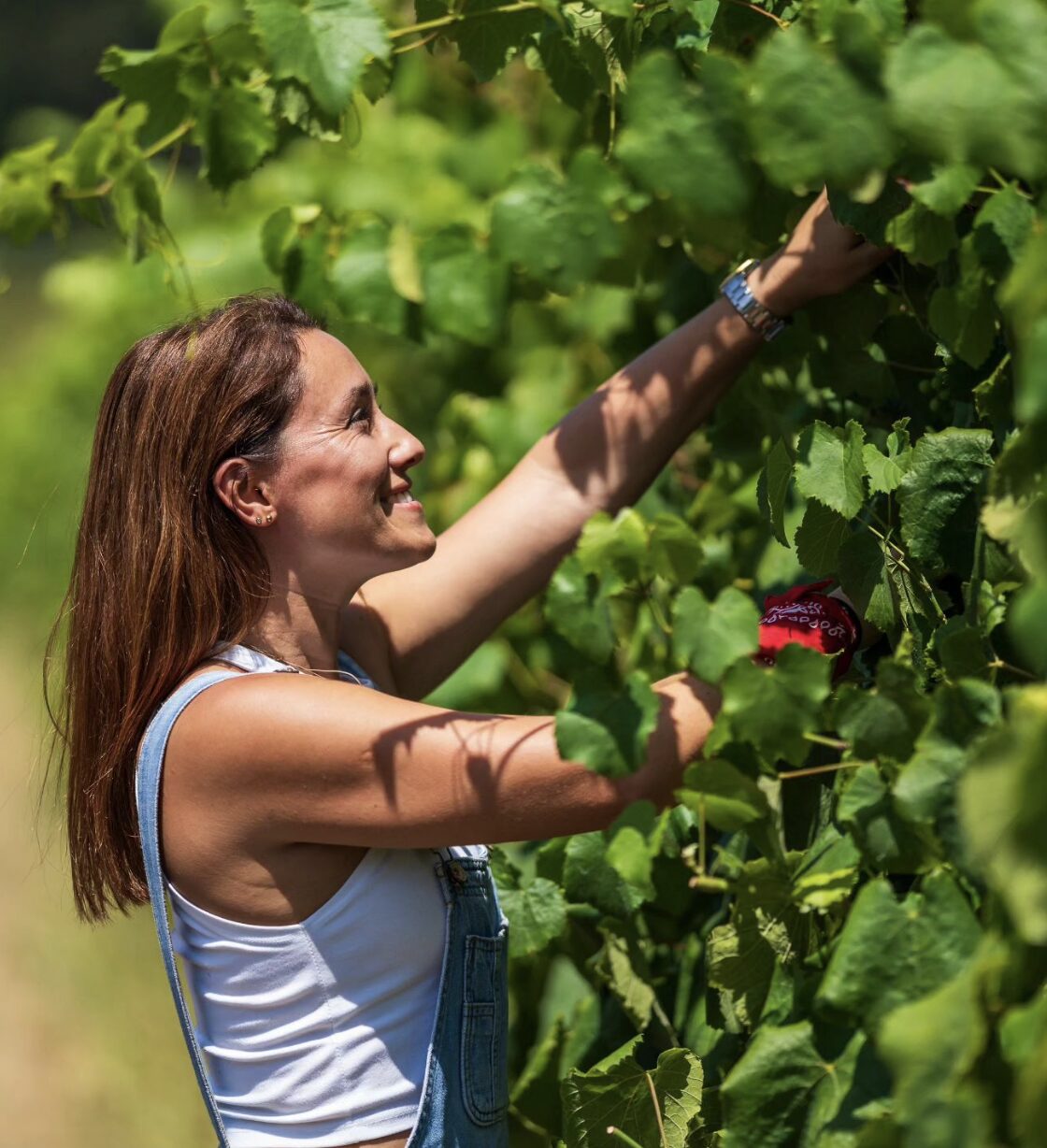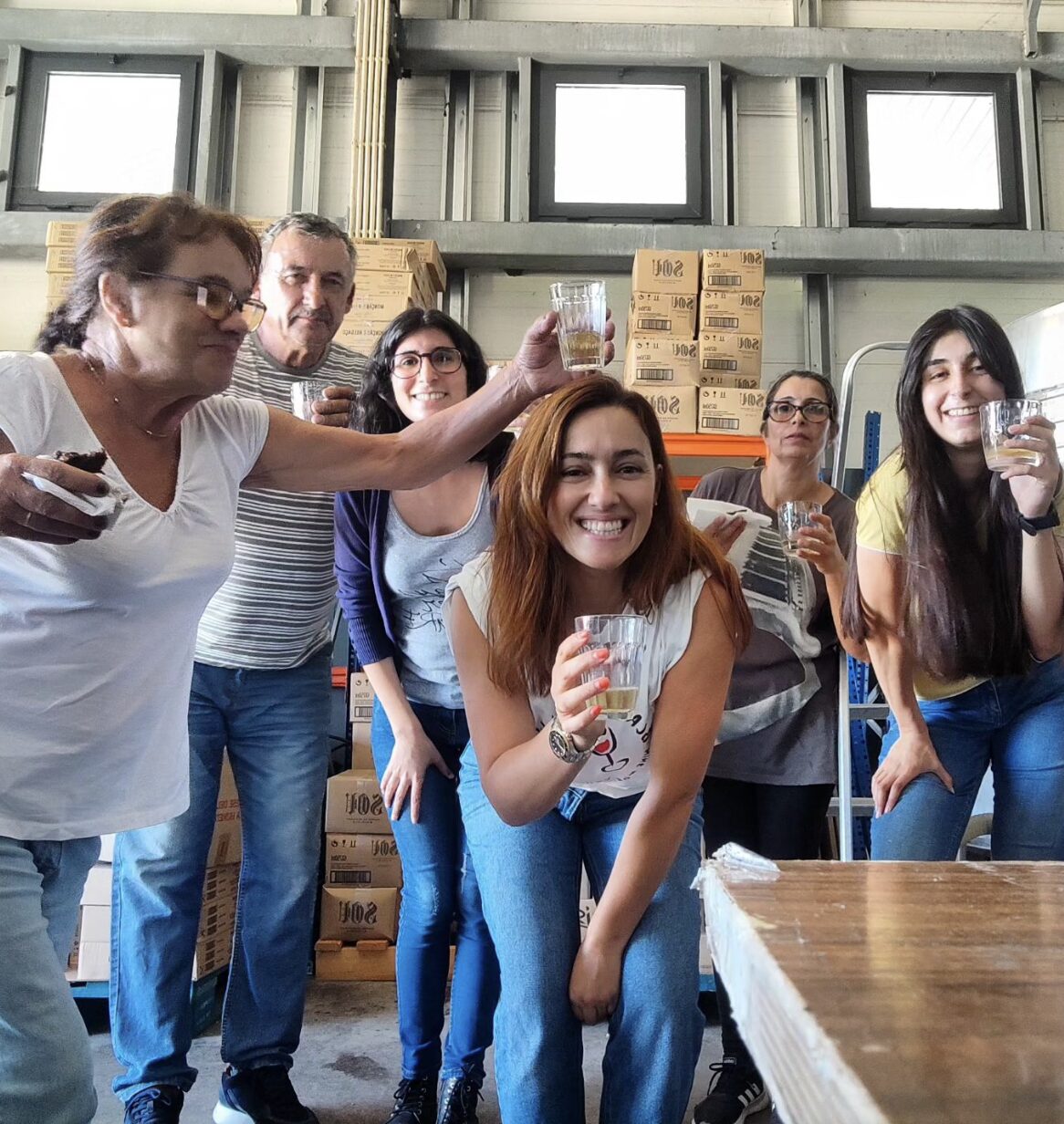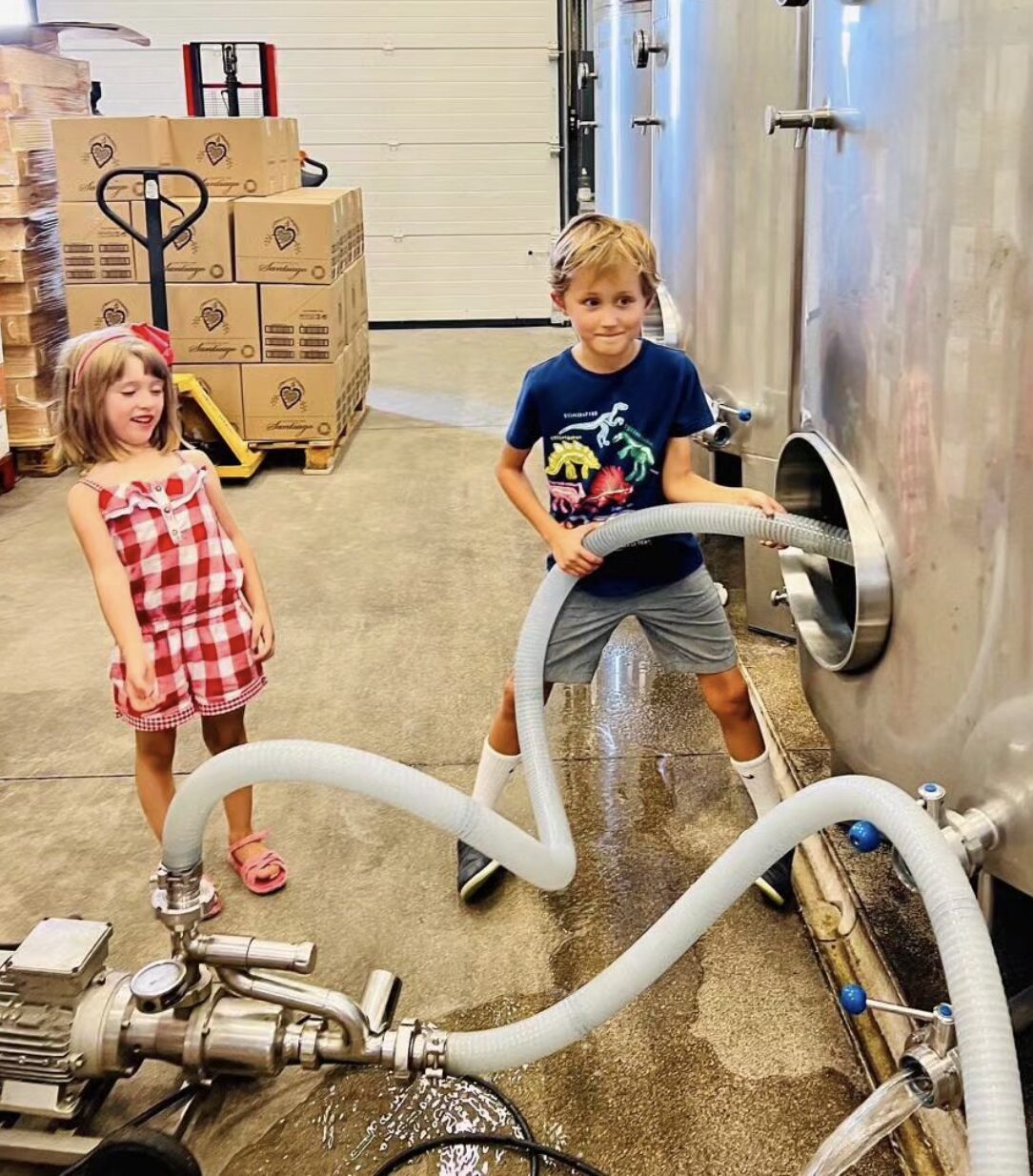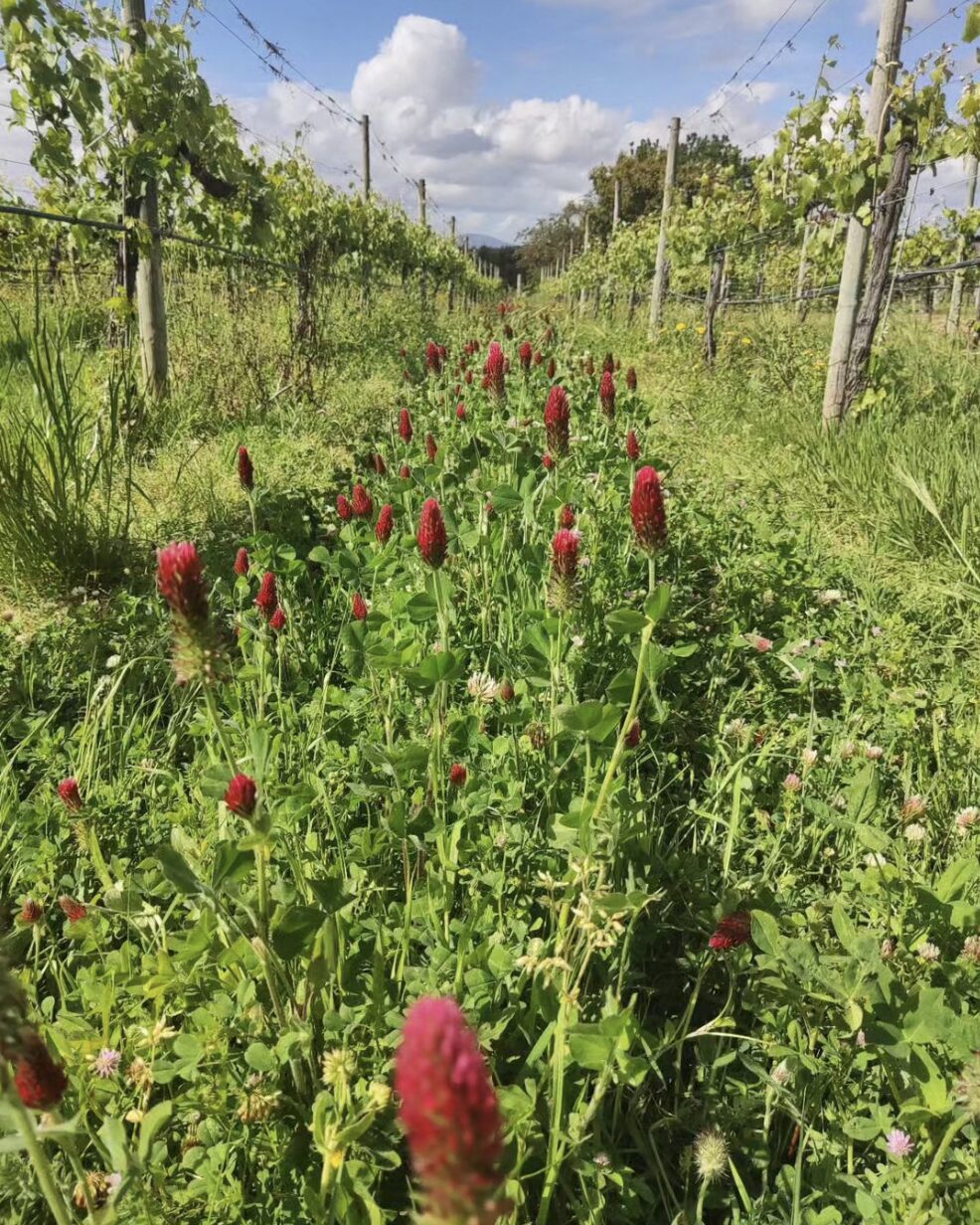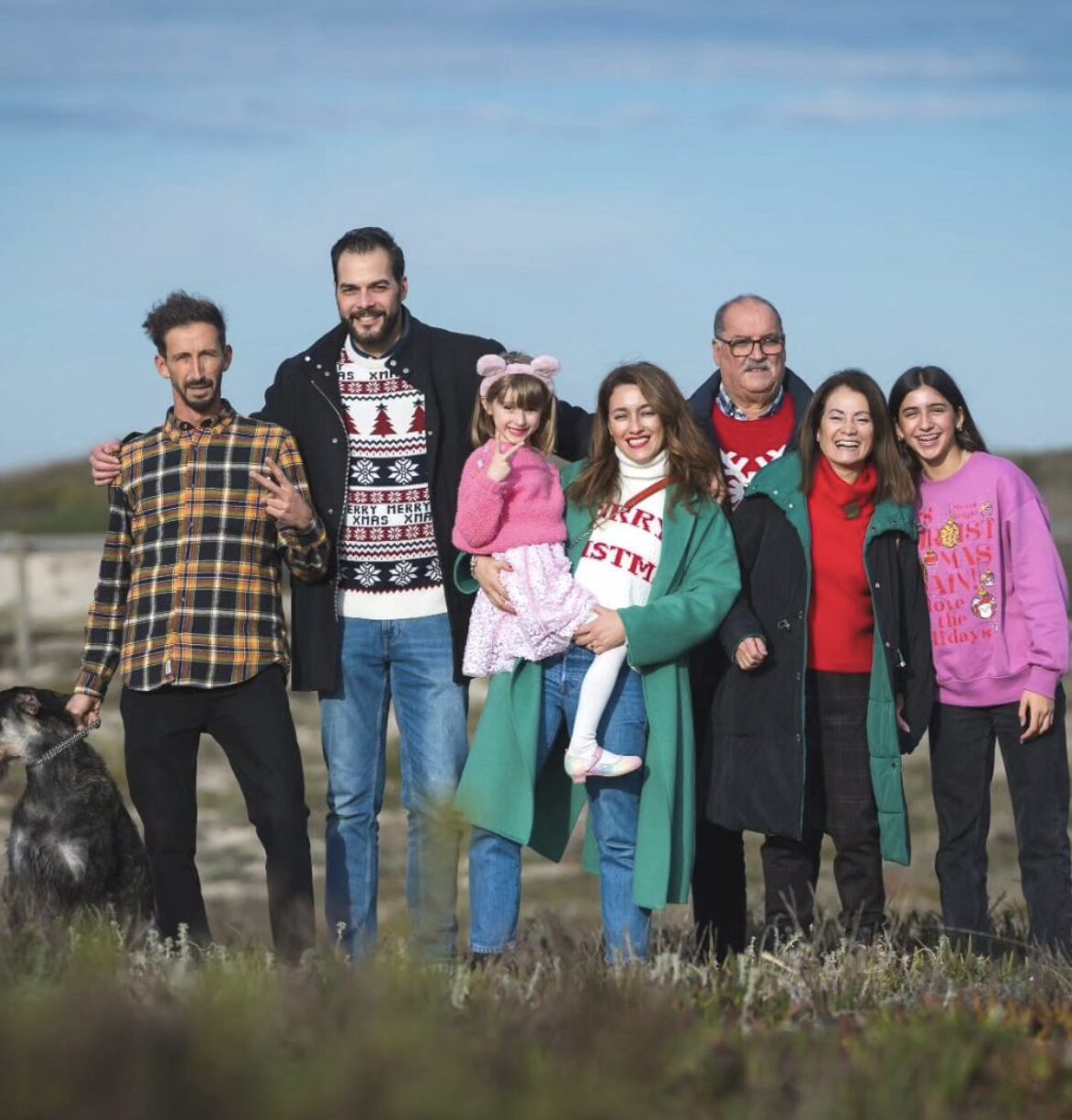2022 Quinta de Santiago ‘Vinha do Pisco’ Alvarinho/Loureiro
Alvarinho, also known as Albariño in the neighboring Galicia region of Spain, is known for being a light and refreshing coastal sipper. Paired with tapas in Spain and Portugal, enjoy this wine with seafood, salads, and veggie forward dishes.
Organic farming practices, hand-harvested, native yeast fermentation, and woman-winemaker.
- Tasting Notes lime, lime zest, lime blossom, green apple, grapefruit, fresh cut herbs, white pepper, minerality
- Variety Alvarinho/Loureiro
- Region Portugal, Vinho Verde
- Volume 750ml
- Alcohol Volume 12%
- Table Talk Joanna is hyper-focused on sustainability and biodiversity. She leads a group of regional growers focused on water use and the preservation of local natural resources.
$34.00
Quinta de Santiago is a family-owned farm spanning 7.5 hectares (18.5 acres) along the banks of the Minho River in the Monção and Melgaço sub-region of Vinho Verde. It has been in the Santiago family since 1899. For about 100 years, Quinta de Santiago’s main activity was the production of wines, olive oil, lupine, cereals, milk, meat, and fruit for self-consumption. Grapes grown in the vineyards were sold to large cooperatives in the region. This changed in 2009 and from the passion and determination of then owner, Grandma Mariazinha Santiago (age 86), her children, and grandchildren, a boutique winery was born.
At the head of the family’s winery is Joana Santiago, a self-described “authentic Minho woman” – driven to honor her family’s heritage. It is from a multi-generation devotion to the family’s land and vineyards that the special qualities of Quinta de Santiago are rooted. Santiago family combine tradition, modernity, and enthusiasm to create authentic wines expressing the terroir of the region’s and farm’s native varietals.
The Vinho Verde wine region is located in the northwest of Portugal, extending across the Minho region. It’s one of the country’s largest wine-producing areas and is famous for its light, refreshing white wines, although red and rosé varieties are also produced.
Here are some key points about the Vinho Verde wine region:
Climate and Geography: The Vinho Verde region has a maritime climate influenced by the Atlantic Ocean, with mild temperatures and high levels of rainfall. The region’s landscape is characterized by lush green countryside, rolling hills, and valleys.
Grape Varieties: The region primarily produces white wines made from indigenous grape varieties such as Alvarinho, Loureiro, Arinto, and Trajadura. These grapes are well-suited to the region’s climate and soil, producing wines with vibrant acidity and distinct aromatic profiles. Some red and rosé wines are also produced, often using grapes like Vinhão and Espadeiro.
Winemaking Techniques: Vinho Verde wines are typically vinified using modern winemaking techniques to preserve their fresh and fruity characteristics. Many of the wines are made using the “green wine” style, which means they are intended to be consumed young and are often slightly effervescent or lightly sparkling.
Styles of Wine: While most Vinho Verde wines are white and known for their crisp acidity and lightness, there are variations in style. Some wines may be slightly fizzy, known as “Loureiro” or “Alvarinho” styles, while others may be still. Rosé and red Vinho Verde wines tend to be less common but offer different flavor profiles, often with fruity and floral notes.
Food Pairing: Vinho Verde wines are incredibly versatile when it comes to food pairing. Their high acidity and freshness make them an excellent match for seafood dishes, salads, light appetizers, and Asian cuisine. They also pair well with traditional Portuguese dishes such as grilled sardines, bacalhau (salted cod), and caldo verde (green soup).
Quality Designations: The Vinho Verde region has several quality designations, including Vinho Verde DOC (Denominação de Origem Controlada) and Vinho Verde VR (Vinho Regional), which indicate the geographical origin and quality standards of the wines produced in the region.
Sustainability: Many producers in the Vinho Verde region are committed to sustainable viticulture practices, including organic and biodynamic farming methods. This focus on sustainability aligns with the region’s natural environment and helps to preserve its unique terroir for future generations.
Overall, the Vinho Verde wine region offers a diverse range of wines that showcase the unique terroir of northwest Portugal, making it a popular choice for wine enthusiasts seeking fresh, vibrant, and approachable wines.
Related Items
-
2023 Domaine de la Côte ‘Bloom’s Field’ Pinot Noir
$120.00The highly allocated DDLC wines have finally been released!
More than any other vineyard, Bloom’s Field embodies the spirit of the Domaine. It’s lush and complex with a velvety texture that will continue to get better as it ages. Only 6 bottles available.
Organic farming practices, native yeast fermentation, whole cluster vinification, 12 months in 30% new french oak barrels & only 647 cases produced.
-
2024 Domaine de Fontsainte ‘Gris de Gris’ Corbieres Rosé
$26.00Though part of the appeal of Fontsainte’s Gris de Gris is that it’s so drinkable on its own—with just a beach read, its adaptability to food only bolsters its charm. Try is with some salty cheese or simply some crudités.
Sustainable farming practices
-
2021 Railsback Frères ‘Les Rascasses’ Rosé
$30.00Lyle and Eric Railsback began making wine together as Railsback Frères to produce rosé, inspired by Lulu Peyraud and the old style of Bandol rosé. This wine pays homage to Lulu Peyraud of Domaine Tempier and her infamous bouillabaisse recipe. If you aren’t going to make bouillabaisse, enjoy this with ceviche, summer squash pasta, or our Herbed Goat Cheese & Caramelized Onion Galette.
Organic farming practices, hand-harvested, direct-to-press, native yeast fermentation, aged in neutral French oak barrels for 6 months, no fining or heavy filteration, only 2,400 cases produced.
-
2020 White Rock Vineyards Napa Valley Estate Chardonnay
$40.00White Rock Vineyards is shaped by its volcanic soils and bedrock, which yield small berries packed with deep, concentrated flavor. This Chardonnay is a true expression of that terroir—elegant and layered, with silky richness balanced by crisp acidity. Notes of stone fruit, yuzu, and freshly baked pain au lait lead into a creamy mid-palate and a refined, mineral-driven finish. Perfect alongside tapas, charcuterie, or a towering display of fresh seafood. Enjoy now or cellar for years to come.
Organic farming practices, barrel fermented in neutral French oak, aged 10 months sur-lie in neutral French oak, only 500 cases produced.







